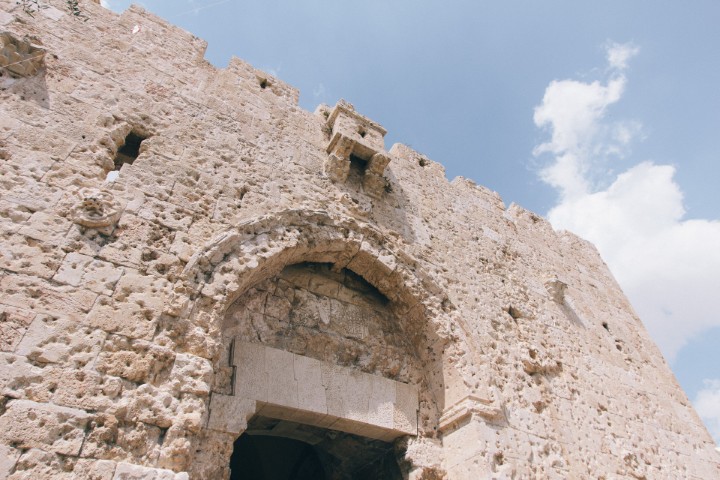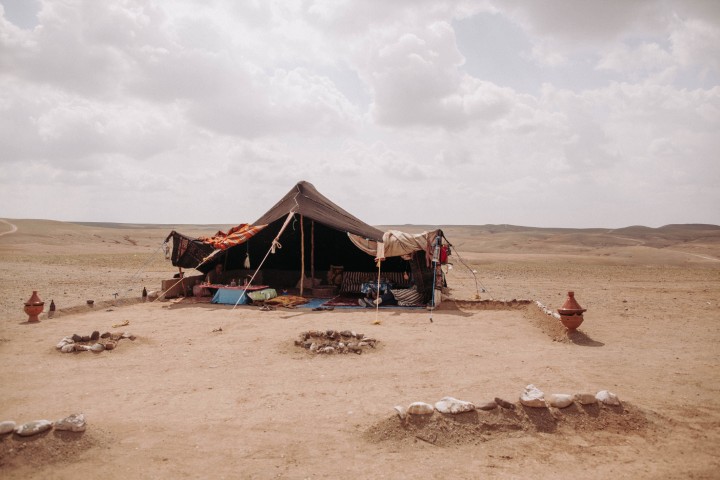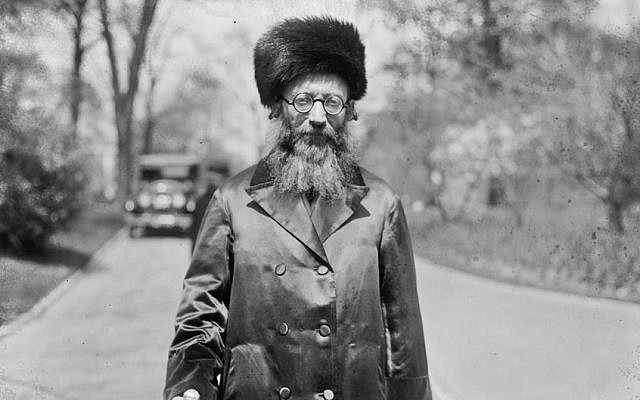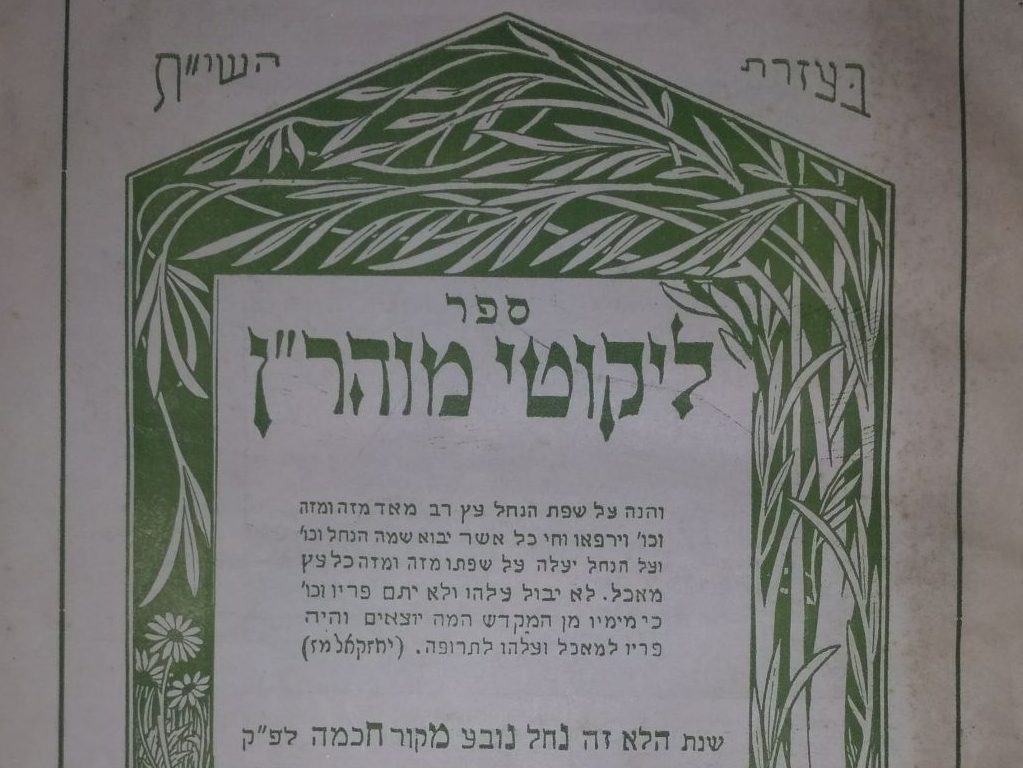
The past might trap us in limbo, but it can also point us where we need to go. A look at Rav Shagar's drasha for Yom Yerushalayim.
Zachary Truboff
f
Shortly before making aliyah, I attended a brit milah where I was asked to hold the baby as he received his name. It is a very special honor, one that I had never had before. As I stared into the little boy’s eyes, I was immediately struck as the name was announced. He was to be named for his great-grandfather, an incredible man who had not only survived the Holocaust but somehow managed to maintain strict religious observance under years of Communist rule in Russia after the war. He died several years earlier, but I knew as I held this little beautiful baby in my arms, that his name and his memory would continue onwards. As the young boy grows older, he was sure to hear stories about his great-grandfather and find inspiration from his life.
Ideally, the Jewish past imbues our life with meaning but it is not always the case that this occurs. Sometimes, the past traps us, and we find ourselves looking back when we should be facing forward. In his essay ‘The Gates of Jerusalem’,1 originally delivered as a drasha on Yom Yerushalayim, Rav Shagar analyzes two fascinating midrashim about the gates of the Temple, and demonstrates how each one represents a different way of relating to the Jewish past.
The first midrash imagines what happened to Korach after he and his sons were swallowed by the ground as a result of their failed rebellion. Though it would have been reasonable to assume that they simply perished, the midrash tells a different story, one Rav Shagar describes as Kafkaesque.
They descended deep under the earth where they thought they would stay forever until Hanah came and prophesied about them as it is said, ‘The Lord deals death and gives life, Casts down into Sheol and raises up.’ (Shmuel 1, 2:6) Nevertheless, they still did not believe that they would ascent from the depths until the Temple was destroyed and its gates were swallowed up by the earth as well… the gates came to Korach, he grasped them, and then he understood that when these gates are raised up so too will he and his sons be raised up along with them. Until that time they were to be the guardians of these gates.2
Korach fell beneath the earth, but he did not die. Rather, he was trapped in limbo, living a ghost-like existence somewhere between life and death. According to Rav Shagar, this should be understood as a fate worse than death, for ‘Human beings are afraid of death, but they are even more afraid of being stuck. The fear of being stuck is the fear of living a ghost like existence, a state of fixation that one cannot be freed from. In the deeper sense this is the fear of a life lacking life, life behind which there is nothing but an empty existence.’ It’s an appalling punishment to be condemned to such an existence, never knowing when it might end. For Korach, hope only began to emerge when the gates of the Temple were also swallowed up by the earth in the wake of the churban. It was at this point that Korach understood that at some point future date, the gates would be redeemed and he along with them. However, until that day arrives, he cannot escape the absurdity of his existence. He and his sons must fulfill their traditional role as leviim looking after the gates of the Temple, but these gates do not lead to God’s presence as they once did, rather they lead nowhere.
For Rav Shagar, this midrash is a quintessential description of how since the destruction of the Temple, the Jewish people’s relationship to the past was like that of Korach. While in exile, they have often been stuck in limbo, unable to live life in the here and now, and powerless to shape their future. While mired in exile, they could only dream about a past that they were unable to return to. They directed their prayers to the Land of Israel but few if any imagined that they would see it in their lifetime. In the words of Gershom Scholem, it was a ‘life lived in deferment.’ God would redeem the Jewish people someday, but when that day might come was beyond their control, and until then the Jewish people had a past but no true future.
As tragic as this description may be, it is not the only way in which we Jews can relate to the past. While the past can trap us, it can also point the way to the future. Instead of serving as a door that opens to nowhere, the past can guide us to true holiness. To illustrate this, Rav Shagar points to a second midrash:
‘O gates, lift up your heads! Up high, you everlasting doors, so the King of glory may come in!’ (Tehillim 24:7). Shlomo said this verse when the ark of the covenant (aron) was brought to the holy of holies in the Temple. He made the aron ten amot wide and when it arrived at the entrance of the Temple, it was discovered that the gate was also ten amot wide. It is not possible for ten amot to be brought inside ten amot… Shlomo stood up and was deeply embarrassed, not knowing what to do. He began to pray before the Holy One Blessed be He [and he was not answered]. What did Shlomo do? He went and he brought the coffin (aron) of his father and said ‘O Lord God, do not reject Your anointed one; remember the loyalty of Your servant David’ (Divrei HaYamim 2 6:42)… At that moment David lived… As David once said, ‘O Lord, You brought me up from Sheol, preserved me from going down into the Pit.’ (Tehillim 30:4). Shlomo said: Master of the universe, act for his merits as it says, ‘remember the loyalty of Your servant David.’ (Divrei HaYamim 2, 6:42). His prayer was immediately answered… and the glory of God filled the Temple.3
This midrash depicts a very different relationship with the Jewish past. At the height of what should be Shlomo’s most celebrated achievement, he is unable to complete the task. Even though he, and not his father, was chosen by God to build the Temple, he is unable to finish its construction without his father’s assistance. Though David had been dead for some time, Rav Shagar explains that in the Jewish conception of time
Not all that appears dead is dead. David even in death was able to have an impact on this world and act upon it even more successfully than his son Shlomo, the living king. The meaning that the midrash attempts to impart to us is that the past, though it may appear to us that it is dead and buried, is in fact the only thing which can unlock the gates that lead to holiness.
The message is clear. Even at times of transition and crisis, the legacy of the past is always available to us. It need not trap us but can in fact point us where we need to go. Every so often, we experience rare instances when the depths of history brush up against us. The past pours itself into the present, filling our lives with meaning, the momentum carrying us into the future. In these moments our horizons expand, and we recognize that the world is so much bigger than the narrow way in which we typically conceive of it.
No force in modern Jewish life has enabled this more than Zionism. In the last two centuries as the Jewish condition began to change, Zionism enabled the Jewish people to relate to their past and future in a fundamentally different fashion. Zionism recognized that the Jewish future was dependent on providing answers to the two greatest challenges of modern Jewish life, what Achad Ha’am called the problem of the Jews and the problem of Judaism. The problem of the Jews was the virulent anti-semitism of Europe that prevented Jewish integration and threatened the Jewish people’s very existence. The problem of Judaism was the profound challenges presented by modernity to Torah and the Jewish people’s way of life. Zionism understood that both dilemmas could only be solved by returning to the Land of Israel, the Jewish past, and bringing it into the present. Only there could the Jewish people recover their agency and find the freedom necessary to protect themselves while also rediscovering cultural and spiritual creativity which had long lain dormant. Zionism allowed the Jewish people to enter into history once more, carrying the Jewish tradition with them as they created the Jewish future.
I felt this sensation most strongly in my own life thirteen years ago, at the birth of my oldest child, when we first lived in Jerusalem. Born during the week between Yom HaShoah and Yom Haatzmeut, he arrived at a time when the presence of the Jewish past is palpable. His first night in our small Jerusalem apartment was Yom HaZikaron and as the siren was sounded, my wife and I walked over to his crib and stood silently over him. Our minds immediately turned to the thousands who had gave their lives so the Jewish state could endure. We had long considered aliyah and knew that if we were to live here permanently our son too may have to pay that price. In that moment we could not escape the weight of Jewish history bearing down upon us. But rather than suffocating us, it filled our lives with a sense of meaning and purpose as we realized that it was here in the Land of Israel where the Jewish past opens the doors to the Jewish future.
Now, thirteen years letter, we find ourselves in Jerusalem once more. As my oldest celebrated his bar mitzvah less than a month ago, I found myself reflecting again and again upon the sound of the siren, hoping and praying that he too will feel the same way about this extraordinary place. May he and all my children come to recognize that their past is here as well as their future, and may it only enable them to open the gates of holiness.





